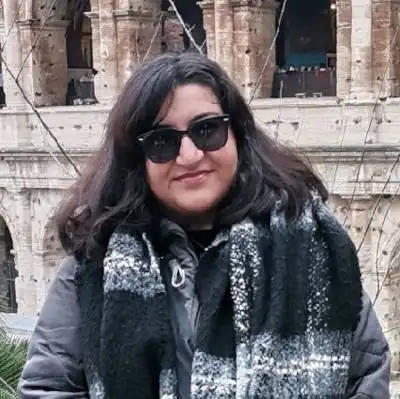
Business Intelligence as a Service
Try PlusClouds Eaglet service and find high quality B2B hot leads and opportunites with AI support.


Digitalization in the real estate sector is not limited to price analyses. Artificial intelligence can now predict the value of a house by deriving meaning from visuals and can be used as decision support systems in complex planning processes like urban transformation. So, how do these technologies work? Are they really reliable? Can they be integrated into urban transformation examples?
Visual recognition is a technology that allows artificial intelligence systems to detect objects, patterns, and structural elements in photos and videos. This system is particularly important in fields like real estate where visual quality and environmental factors affect value.
Photos of the interior and exterior of houses are fed as input into deep learning models like CNN (Convolutional Neural Network). This system recognizes objects in the image (such as kitchen cabinets, boilers, landscapes, etc.) and labels them according to quality classes.
Applications and Tools Used:
• Google Cloud Vision API / AWS Rekognition: Commonly used APIs to recognize and label objects in visuals.
• OpenCV: Used for low-level analyses like image processing and edge detection.
• YOLO (You Only Look Once): Used for real-time object detection and classification of household elements.
• TensorFlow/Keras: Popular Python-based libraries used to train CNN models.
• LabelImg, Roboflow: Used for manual labeling in preparing training sets.
• House photos are uploaded.
• The system classifies the factors affecting quality in the image (for example, "luxury kitchen" or "old tiles").
• These visual data are cross-analyzed with neighborhood-specific prices.
• Estimated market value is presented.
Example: An Apartment in Beşiktaş, Istanbul
The model identifies a fireplace, laminate flooring, and natural light in the living room photo. In the kitchen, it detects high-end appliances and an island-type countertop. All these components provide an estimated value of approximately 13 million TL based on comparisons with information learned from over 10,000 previously priced apartments.
In urban transformation planning, not only structural risks but also social, economic, and infrastructural dynamics should be assessed. Artificial intelligence has become a powerful tool supporting this multidimensional decision-making process.
Data Used:
• Land Registry and Cadastre data (building age, square meters, etc.)
• Soil survey reports and AFAD data (earthquake risk)
• Zoning plans from the Istanbul Metropolitan Municipality and other local governments
• Environmental data such as traffic density and green space ratio
• Socioeconomic statistics integrated with TURKSTAT and e-government
Models and Tools Used:
• Scikit-learn & XGBoost: Neighborhood-based risk score prediction with socio-economic data.
• QGIS + Python: Geographic data analyses and mapping of risky areas.
• LSTM (Long Short-Term Memory): Rent-yield rate prediction with time series analyses.
• Google Earth Engine: Detection of building density and green spaces using satellite data.
<h3 id="Real Life Simulation: "AI-Urban"> Real Life Simulation: "AI-Urban"
The fictional artificial intelligence platform "AI-Urban" analyzes 10 neighborhoods in Istanbul requiring transformation. It generates scores based on the following criteria:
• Building constructed before 1980: +2
• Soil prone to liquefaction: +2
• At least 1 hospital and 1 school missing: +1
• Rental rates decreased by 30% in the last 5 years: +1
• Population > 20,000 people/km²: +1.5
Based on these criteria, the model detects that there is a priority for transformation in certain sub-neighborhoods in Gaziosmanpaşa, Zeytinburnu, and Kadıköy.
Integrating these two systems can be very valuable for municipalities. For example:
• The quality of the structures is analyzed using visual recognition.
• Regional priorities are determined using urban models.
• Results are combined in an AI-supported platform and information is provided to property owners.
Especially in cities like Istanbul located in earthquake zones, such systems mean not only valuation but also the production of life-saving strategies.
LeadOcean is a data-driven, AI-based digital marketing platform developed by PlusClouds that manages customer acquisition processes. By integrating data from websites, digital campaigns, and CRM systems, it helps you find potential customers.
A Look at the Real Estate Sector: It enables you to find companies and organizations operating in the real estate sector with a single click and connects you with them. LeadOcean visits your website to understand your business, ideal customers, and characteristics of potential customers. In seconds, it creates a detailed company profile and tailors your potential customer pool according to your specific needs.
Interaction in Urban Transformation: LeadOcean can facilitate the flow of information by bringing property owners, investors, and consultants involved in the transformation together on a common digital platform.
AI-Supported Potential Customer Matching for Accuracy: LeadOcean's AI analyzes your business profile and finds companies that match your criteria perfectly. Say goodbye to manual research, and hello to high-quality potential customers.
In the digital transformation process in real estate, LeadOcean can enable projects to become smart not only in planning but also in marketing and engagement processes with its AI-supported infrastructure.
Challenges:
• Access to quality and up-to-date data (especially visual data)
• The effect of cultural differences in visual recognition (e.g., classification of local architectural features)
• Lack of legal and ethical framework
Future:
• Integrated smart transformation platforms for municipalities in Turkey
• Automation of "visual appraisal reports" for banks
• Urban analyses managed by AI with digital twins of all cities
Artificial intelligence is transforming the world of real estate into a mind that not only analyzes but also "sees", "learns", and "suggests". Thanks to visual recognition technologies, photos are no longer just marketing elements; they have become data sources.
Urban transformation is now possible not only physically but also through digital transformation. As long as it is fed with the right data, artificial intelligence can be the architect of safer, more valuable, and sustainable cities.